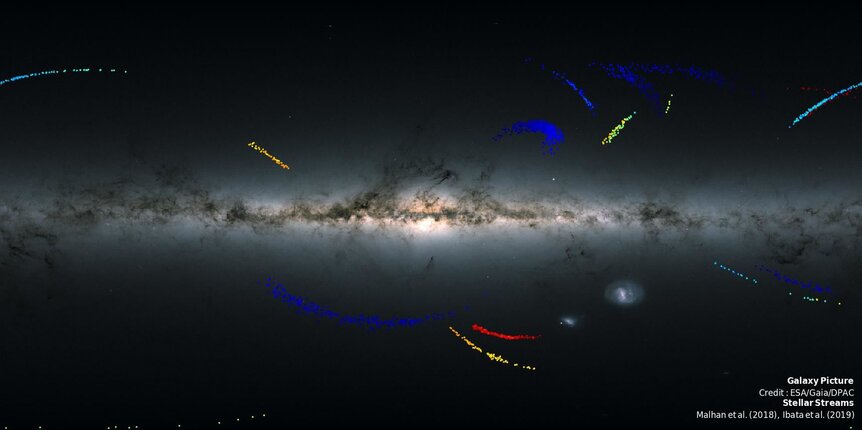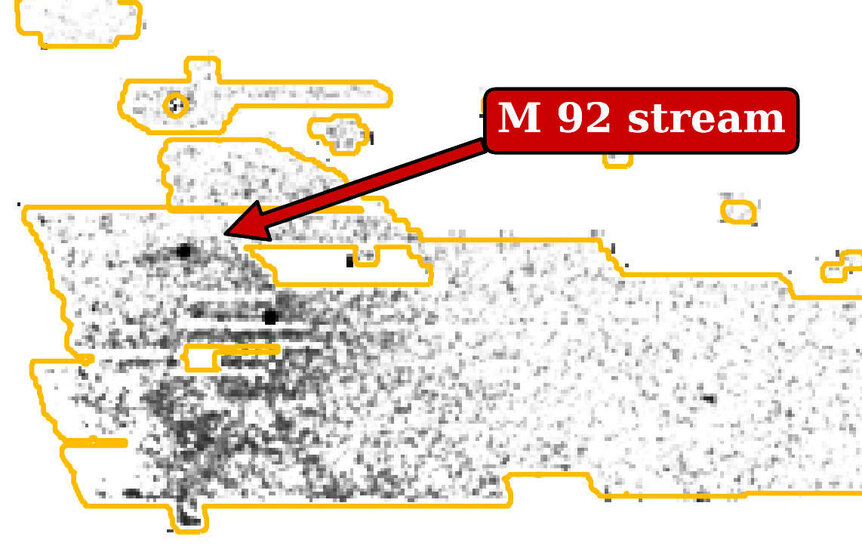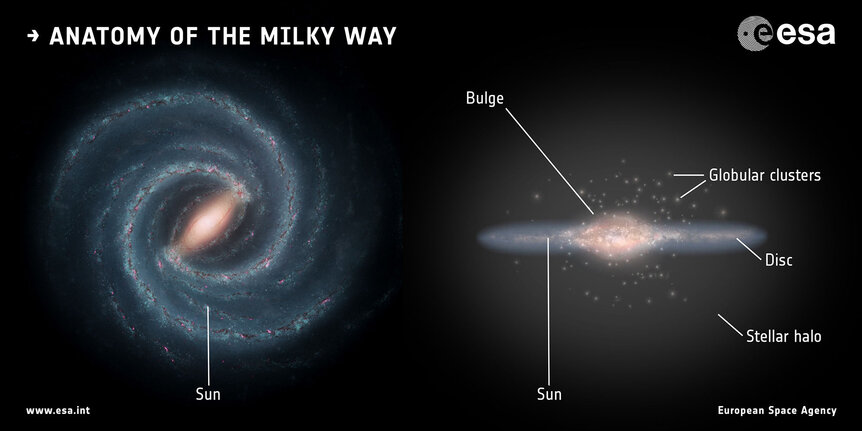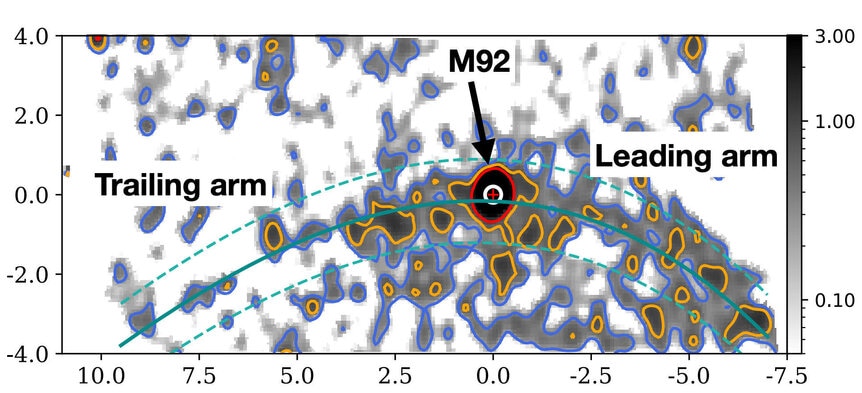Create a free profile to get unlimited access to exclusive videos, sweepstakes, and more!
Astronomers see the Milky Way eating one of its own
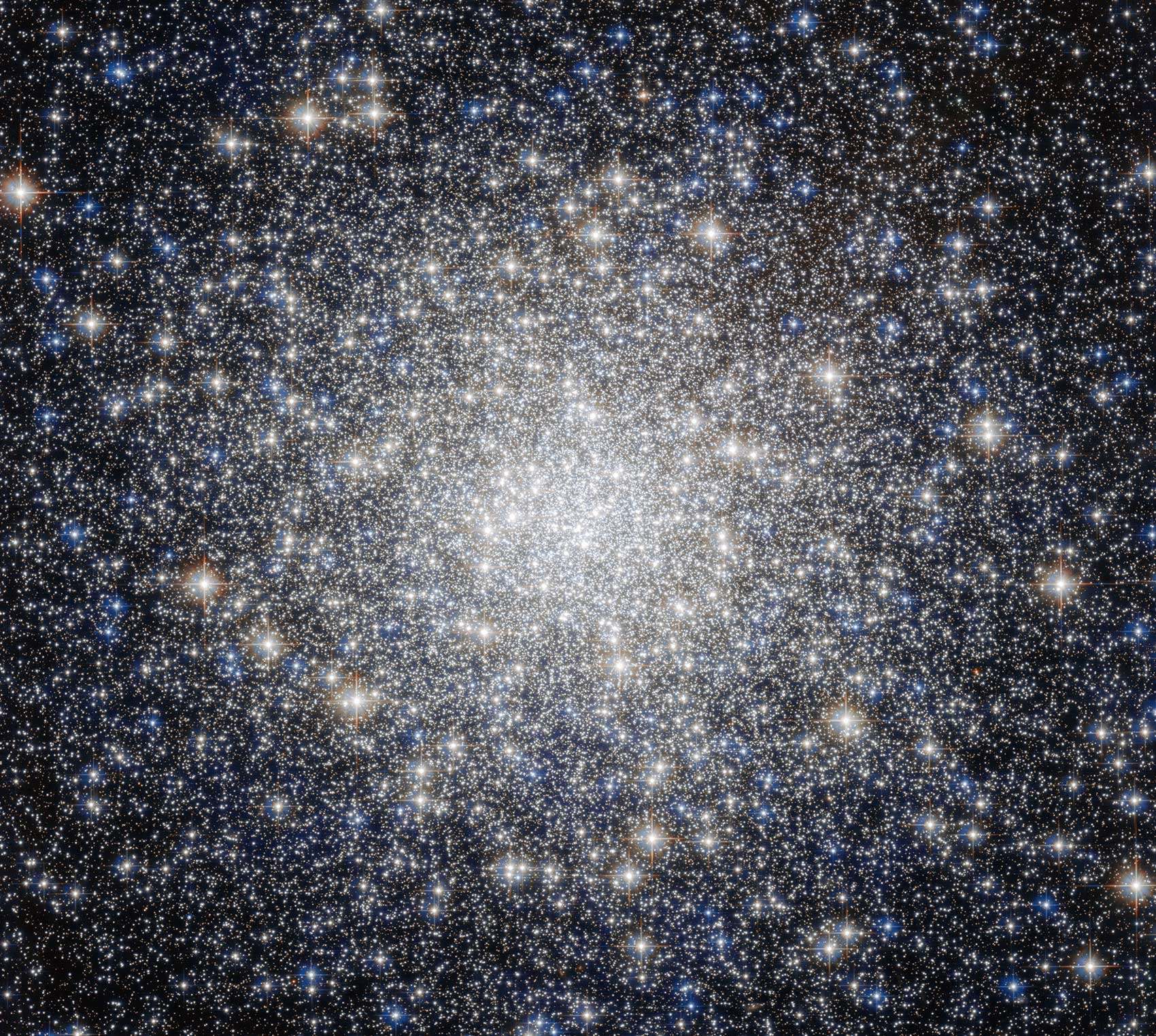
The globular cluster M92 is a gorgeous example of its kind. A roughly spherical ball of hundreds of thousands of stars held together by their mutual gravity, it's one of about 160 such that orbit the Milky Way.
Well, for now. It turns out our galaxy is eating it.
Astronomers have discovered a stream of stars ahead and behind the cluster as it orbits, stellar citizens stripped away by the gravity of the Milky Way. This is surprising, given the great age of M92 — about 11 billion years old — which means something happened recently* to change things.
A lot of these stellar streams have been found over the past couple of decades. Some are from small galaxies that have passed too close to the Milky Way (which is a big galaxy), and some from globular clusters. Some we're not sure. A half dozen or so have globulars associated with them, and more from dwarf galaxies, while some don't seem to have any particular source; it's likely they came from objects that the Milky Way has completely torn apart.
Basically, as a small object like a cluster or dwarf galaxy approaches, stars on their outer edges feel more gravity from the Milky Way than from their parent object, and get pulled off. It's a little bit like a cloud of dust stripped off a truckbed full of dirt, with the cloud streaming behind the truck. In this case though, because it's due to tides, the galaxy's gravity pulls these stars both ahead and behind the victim. The result is a thin noodle of stars spread out across the sky.
These streams have escaped attention for centuries because they're extremely difficult to spot against the billions of other stars in the galaxy. But big sky surveys looking at millions or billions of stars make it possible to spot them. One way is to look at just the motions of stars; they all appear to be moving together in one direction. If distances can be found, they all fall along a single arc, the trajectory orbit of the parent object.
In the case of M92, astronomers first looked at a pair of huge surveys of stars done using the Canada-France-Hawaii Telescope and Pan-STARRS. They took an area of the sky around M92 and looked for stars with colors that matched that of the cluster — knowing the age of the cluster, and that the color of a star depends on its mass and age, they could make a cut filtering out stars that didn't match the cluster. They also looked for stars at about the same distance of the cluster as well, since the stream would have about that distance.
When they did, the stream popped right out of their data. The total number of stars implies the stream has about 30,000 times the mass of the Sun in it, which is about 10% of the stars in the cluster now! So this cluster is just shedding stars.
Now that they had a list of stars in the stream, they turned to Gaia, a satellite that for the past few years has measured the positions, color, distance, movement and more for over a billion stars (yes, a billion). That allowed them to trace the orbit of the cluster backwards in time, and they found it passes through the galactic bulge, the flattened sphere of stars surrounding the galactic center. It also passes right through the galaxy's bar, a more complicated elongated structure in the galactic center.
That's interesting, because they could also measure the motion of these stars away from the cluster, which gave them a handle on how the stream has changed over time.
Given the distance and velocity of the stars in the stream, they found that these stars were stripped from M92 only about 500 million years ago, and the majority of them less only in the past 300 million years. That's very recent, compared to the 11 billion year age of the cluster.
If it passes through the galactic center every orbit, then, given the rate of star loss, it should be long gone. That in turn implies the orbit recently changed. Otherwise the cluster shouldn't exist.
It's possible this last pass through the galaxy changed the orbit, since the gravitational field in the galactic center is complicated. If something else can make that big an orbital change, I'm at a loss as to what it is. It could have passed another cluster, and their gravitational interaction affect them both, but the space surrounding the galaxy is very roomy, and clusters very few. The odds of a near collision are extremely small.
The astronomers plan on looking for more stars from the cluster, perhaps ones that got farther away, creating a halo around the stream. That could help them figure out what's going on. The work is painstaking, though, so it may be a while before they have any further information.
These streams are fascinating to me. They tell us about the distant past of the galaxy, and also about the construction of it now. As these streams flow, the density of stars in any given part may change due to varying gravitational field sin the galaxy; for example, if they pass near a massive giant molecular cloud of gas and dust, or if the halo of dark matter around our galaxy isn't smooth but instead lumpy. They also tell us about the way globular clusters behave now, how they're losing stars, and how that affects their structure to.
Pretty amazing, considering we didn't even know about these streams a couple of decades ago. Advances in technology have given us this chance to peer into our galaxy's past, and — as usual — things are a lot more complicated and a lot more interesting than we used to think.
*Of course, "recently" for an astronomer is different than to you, probably. I mean sometime in the past 500 million years, not long after animals invented hard body pieces instead of being goo swimming in the oceans.
